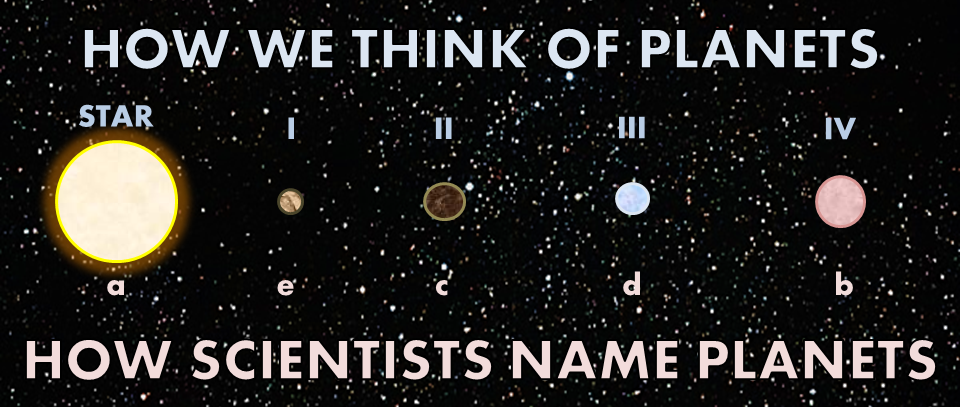With the recent explosion in the discovery of extrasolar planets, there has been some discussion about the naming convention astronomers use to identify new worlds, a system that some find confusing. To be fair, the system is very scientific: each new object discovered is given an alphabetical identifier suffixed to the name of the primary star. So, the first planet found circling Fulanis (not a real star) would be Fulanis b, the second discovered would be Fulanis c, etc., with Fulanis a being the star itself.
As simple as this system is, however, it’s difficult to appreciate its elegance if you’re not a scientist. And it doesn’t reflect the way humans normally think of places. Imagine if newly discovered islands had been identified this way, with Atlantic b as the first discovered in the Atlantic, Pacific d as the third discovered in the Pacific, etc.
Not very user-friendly.
Some have even complained that the scientific convention for naming extrasolar planets conflicts with the way science fiction has taught the layman to think of planet names, by number according to increasing distance from the star: for example, the third planet from Fulanis would be Fulanis III. In the system used by astronomers, the third planet from Fulanis would be Fulanis b if it is discovered first, while Fulanis c could be the fifth planet from the star and Fulanis d the first.
Even so, until we’ve exhaustively investigated a star system (something that’s not easy to do even in our own solar system) there’s no way to apply the numerical “sci-fi” system to planet naming. So that’s a non-starter.

_
There Is An Easier Way
Alongside the official alphabet-based system used by astronomers, I propose an informal “address” system rather than the unworkable numerical model popularized by science fiction. What I mean by “address” system is simply extending the place-reference system we already use in mailing addresses, the system we use in short-form to reference cities, for example: “Los Angeles, California” or “Paris, France.” We can give each planet a common name, and then drop the star name (or system name in a multistellar system) after it. Easy peasy.
For example, a hypothetical planet around Alpha Centauri B could be “Archer, Alpha Centauri.”
This way, we can use planet names multiple times, eliminating the pressure to come up with unique names for the millions of planets we are likely to discover. When I say “Springfield” you might assume I mean the one in Missouri, but I might also mean the one in Texas or another state. To clarify, I would say “Springfield, Virginia.” Likewise, there could be an “Archer, Alpha Centauri” and an “Archer, Procyon.”
Common names for planets could be just this simple. The Max Planck Institute suggests that extrasolar planet names should come from mythology, but even with my degree in comparative religion I find this convention stifling. Let’s just say that common names should be (1) meaningful and (2) easy to use.
This would also require common names for stars with clumsy official names, like the cumbersome HD 209458 in the constellation Pegasus. Let’s say we call HD 209458 “Yellowtail” and use the existing unofficial name for its first-discovered planet HD 209458 b, “Osiris,” we get a new common reference of “Osiris, Yellowtail.” If we find another planet in the Yellowtail system, we could have “Isis, Yellowtail.” If we want to name a planet around Arcturus the same name, it would be “Osiris, Arcturus.”
Who’s with me?
_
NOTE ON THE TOP GRAPHIC: This piece is modified from a 3D graphic, the original credit tag for which I left in the bottom corner. Unfortunately, file translation has obscured it. If anyone knows the original credit citation, please let me know so I can give credit where due.

